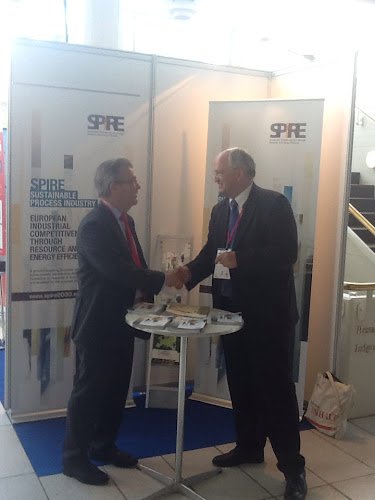Today (June 26) saw the launch of a new communication on Key Enabling Technologies (KETs) from the European Commission. SusChem has been highly engaged in the development of KETs policy within the overall evolution of EU research and innovation policy. A strong sustainable chemicals sector will be fundamental for the new EU key enabling technologies strategy and strongly supports the concepts behind the policy.
The Commission Communication "A European Strategy for Key Enabling Technologies (KETs) – A bridge to growth and jobs" lays down how KETs can be better used to give European industry the necessary boost to keep its technological leadership and to regain competitiveness.
The communication was launched by European Commission Vice-President Antonio Tajani, responsible for Industry and Entrepreneurship. He said: “Most innovative products nowadays, whether it is the smart phone or electric car, incorporate several KETs simultaneously, as single or integrated parts. But KETs can become a real job machine which we so dearly need today. Therefore Europe needs a strategy to develop and industrially deploy KETs. They will determine our economic future and enable the Union to restart growth and job creation by maintaining our global technological leadership.”
KETs - the right chemistry
Cefic, SusChem and the European chemical industry are committed to turning the KETs strategy into tangible solutions that create growth and jobs for the European economy.
Four of the six main technologies identified to strengthen the European Union’s industrial and innovation capacity are core businesses of the sector: advanced materials, industrial biotechnology, nanotechnology and advanced manufacturing.
Gernot Klotz, executive director for research & innovation at Cefic, said: “It is strategic and crucial for Europe that production of KETs stays here. KETs are a cornerstone to re-energise the EU industrial policy.”
Unique position
The chemicals sector enjoys a unique position in European industry to deploy KETs in the products society needs. The industry is considered a value chain captain, engaging with finished-goods producers in Europe to deliver the latest materials that can be used, such as lightweight materials for cars, handheld devices, and better insulation in homes. The sector also benefits from a symbiotic network of small, medium and large companies that enable a wide range of innovative products and technologies.
Klotz added: “We have to avoid placing KETs in silos as these ‘building blocks’ work together to build breakthrough products. Industries like ours who will help implement the strategy realise that EU funding is limited, so it must build on the strengths of EU and national governments and the technology-driven players in that market.”
The chemicals sector has been instrumental in identifying needs and gaps in Europe and providing feedback to policymakers, especially for the final report of the European Commission’s High Level Expert Group on Key Enabling Technologies. You can read more about Cefic's approach to KETs here.
“As a high-tech sector with a strong base in Europe, we will continue to work with EU policymakers and member states to ensure this new strategy delivers on its objectives,” Klotz concluded.
For more information about key enabling technologies, visit the European Commission KETs website.
K4I on KETs
SusChem / Cefic were participants at a Knowledge4Innovation dinner debate at the European Parliament at the end of May. A video summary of the debate has now been released by K4I - you can catch up on the discussions here.
The economic impact of KETs could be considerable. The European Commission’s European Competitiveness Report 2010 indicated a global current market volume of €646 billion (in 2006/2008), which is projected to grow to over €1 trillion by 2015. The direct return on public investments in KETs is also substantial with case studies showing a four-times return on the initial investment.
You can access the Commission press release on the KETs communication here and an associated memo here.





















